As promised, here are some photos of the most recent work on the house (the custom matched mouldings over the doors) and the gramophone cabinet.
I'll start with the mouldings. As you may know, about 80% of the original mouldings were scrapped when this house was renovated over the years. I reused absolutely everything I could, but for the most part, a lot of the mouldings will simply be copies of the originals. Lucky for me, the bulk of the mouldings are all extremely simple, and the only tool I needed was a 1/4" round over bit on my router (and I already had the router and the bit). The side pieces of the door casings (originally done in Ash) are just simple 4 1/4" x 3/4 MDF with a round over on each side. The plinth blocks are 4 5/8" x 1 1/8" thick, and about 10" tall. These also have just a simple round over on most (but not all) the edges. The parting bead at the top is a simple 7/16" (I mis-measured this at 1/2" on many of them but it looks the same) piece of stock, 1 1/8" wide, with the same round over on both edges to make a full bead.
The only part that gave me trouble was the top door/window crowns. At work, we have literally hundreds of cutters, router bits, and various shaper blades that I was able to sift through, and we didn't have anything close enough to replicate the top cyma curve (http://www.pushpullbar.com/forums/attachment.php?attachmentid=59870&stc=1&d=1268044693). I puttered around with samples and I wasn't able to get the right curve. This was an early attempt:
But as you can see, it's too squashed.
It was only about 2-3 weeks ago that I ran across a smaple moulding in our rack of smples that I found a curved moulding with nearly the EXACT shape I wanted. I couldn't believe I had missed it. So I went through the cutters again, and I couldn't find it. It turned out to be just a large 1/2" shank router bit (which I could use on the shaper with the auto-feed (this makes cleaner, nicer cuts). In the end, I used that cyma curve along with one other round cutter (to make the bottom coved portion, and nibble-off the rounded tip), and I ended up with this:
PERFECT!
The mouldings needed to be 1 1/4" thick to work, so I was limited to only 3 wood choices at work: 6/4 soft maple, 8/4 poplar, and 6/4 knotty pine. I did not want pine because it's such a bloody pain to paint over, and it nicks easily. Not to mention the knots and sap. So I wanted Poplar, but since it's 2" thick, I'd be wasting a lot of material. I asked my boss's son (the one mainly in charge of pricing, etc) to get me a price for both to know which would be cheaper. I'm a bit cheesed off that he never got back to me (he knew I wanted to make the mouldings before my holidays) so I ended up just making them out of the maple. I know it will probably be more expensive, but from my own quick calculations, I figured that it couldn't be much more than 2$/foot, so I didn't care.
Long story short, I got the bulk of the mouldings made. I made 113 feet, and I think I needed 100 feet minimum, but I wanted spare, so I may need to make more later. I have a bunch of lengths that did not pass well through the cutter, and they're full of chips/splinters, so I may/may not be able to salvage them.
The mouldings took a lot longer to make than I had originally thought. In total, it took around 4 hours.
Here are some of the mouldings installed:
Doorway to the first floor office:
Bathroom door (interior):
And here are a few more photos once they were all painted. I have a bunch done, but I still have quite a few left to do. These are just the first bunch.
Here are the ones in the kitchen:
Detail (I love how they catch the light):
This is in the office. This is the only place in the house where an original moulding (the one on the window) is nearly next to a copy (the one over the door on the right). Luckily, even *I* can hardly tell the difference, other than the fact that the original has double the amount of paint over it.
***
Here's the work done on the cabinet. The foot was a very tricky repair. I had to pretty much break it off, since the tenon holding the foot had a nail going through it. Add to this the fact that the foot is broken in half, AND missing a large chunk.
Step 1 was to clean up the surfaces to be glued, and cut a new blank to fill the missing area. Before gluing the 3 pieces together, I cut the bulk of the waste off the new blank. Once that was done, and glued, I mounted the foot onto the lathe, and carefully cut away the new portion, then re-sanded the whole foot, and did additional touch-up sanding and shaping by hand.
Finished foot:
Once that was done, I had to re-attach the foot. Since I no longer had a tenon, I had a few options. I could just use a large dowel and make a new tenon (this would have been the normal repair), but I still had a nail through the tenon hole, so that wasn't a good option. The second best method (since I had the room) was to use 2 smaller dowels. This worked out perfectly.
Once the rest of the repairs were done, I applied the first "base coat" of a light walnut stain. This helps to clean-up and blend-together any wood blemishes or light stains/fading. It also brings out the true beauty of the walnut veneer.
It looks pretty dramatic there, but the colour change was fairly subtle overall. I used Verathane gel stain in "Special Walnut".
Since the cabinet is made-up of several types of wood (Poplar, plywood, maple, and walnut veneers) some pieces are much lighter. This was commonly done (and is still done today) when using expensive woods. The main (large) sections are done in the "good" wood, and the other smaller parts are made of a cheaper (or stronger) wood, and then simply made to look like the "good" wood with either stains, tints, dyes, or even paints. In my case, I went over these secondary pieces with a "Dark Walnut" gel stain, and I applied it fairly thick. I tried several other dark stains that I had, but they were not deep enough. Generally, you don't want to apply too much stain, since it eventually gets too thick, gooey, or sticky, and you end up with a mess. You could also end up with adhesion issues with your varnish, but I should be ok.
Here's the fully stained cabinet. The only thing I might need to adjust, still, is that really light centre bar. For that, I'll apply more stain between my two layers of varnish.

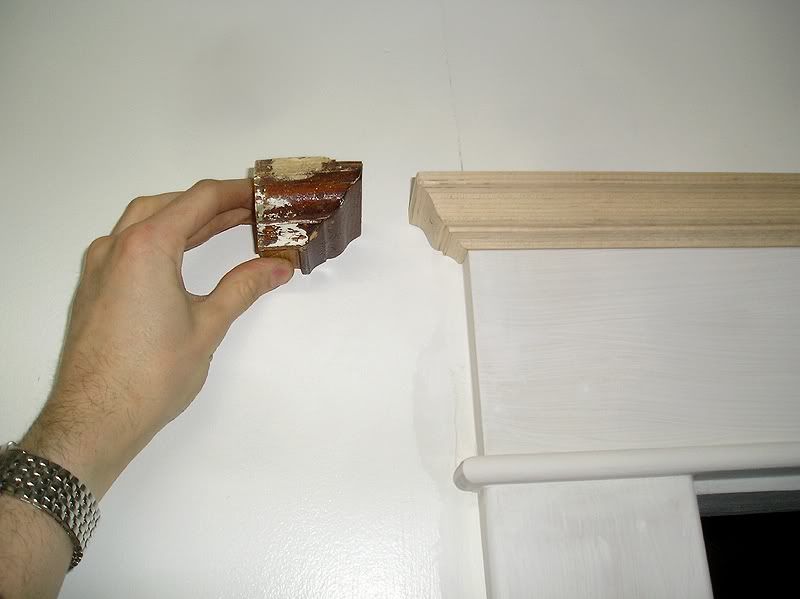
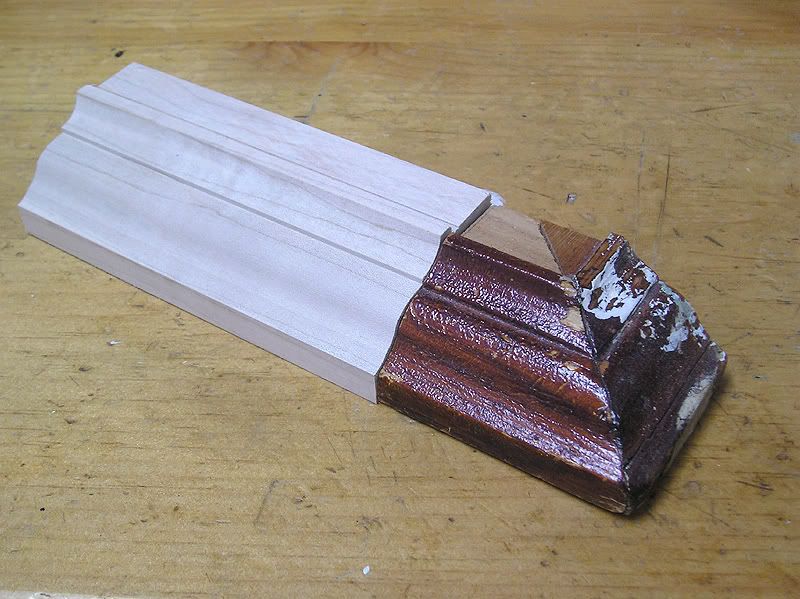


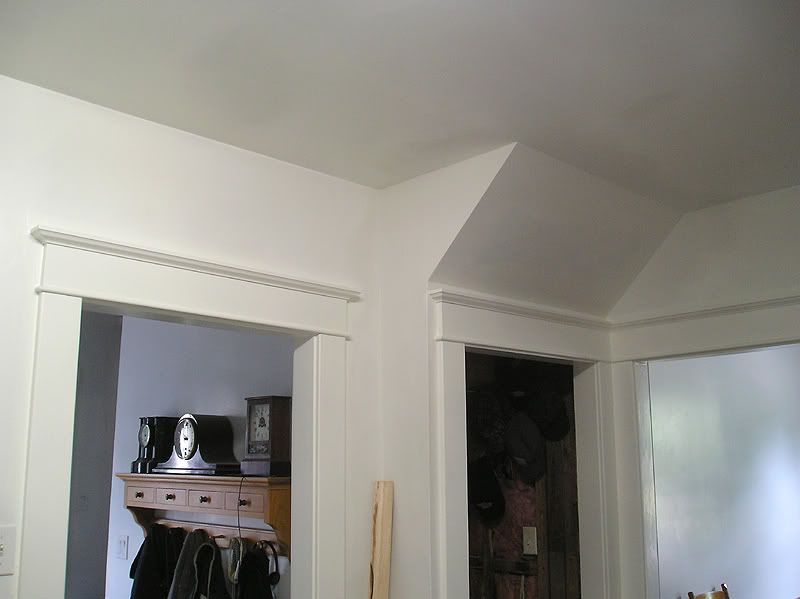
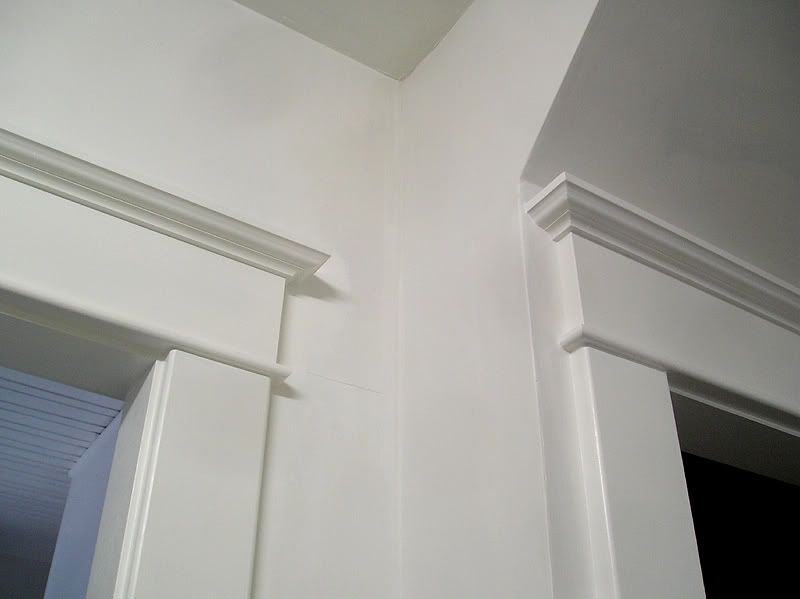

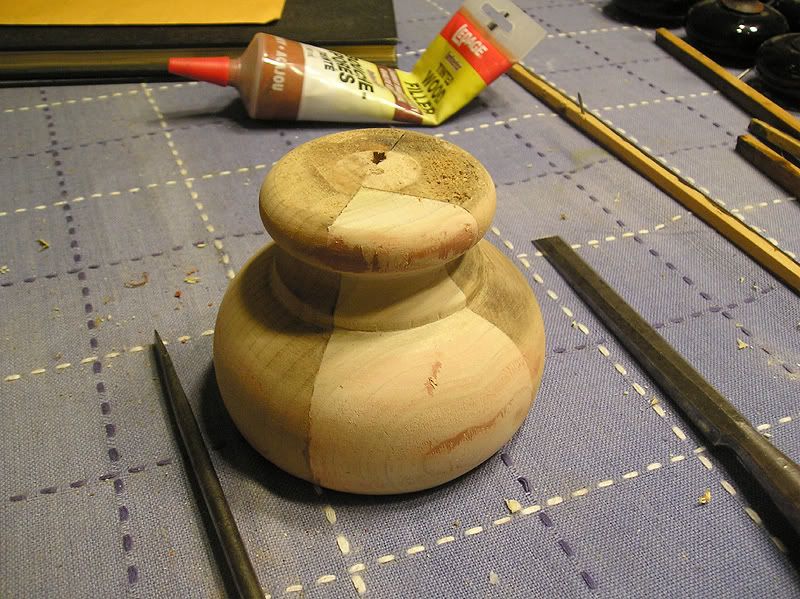
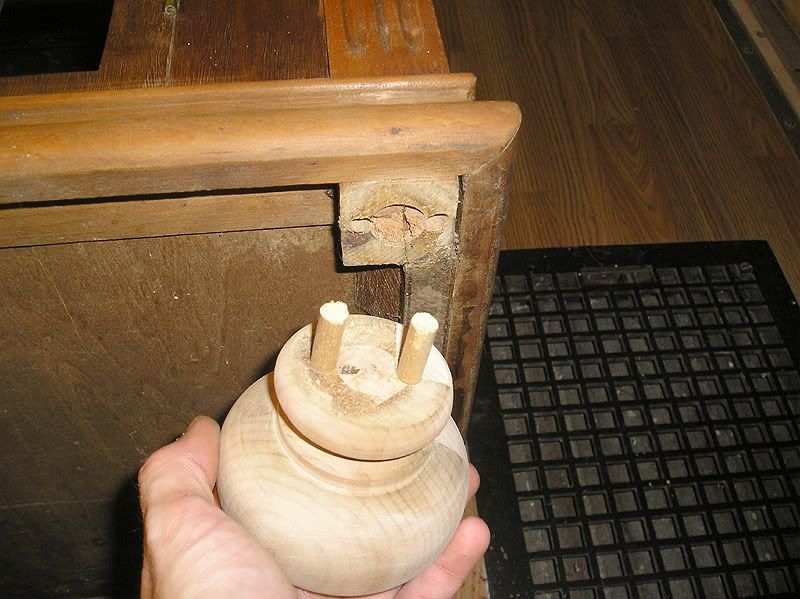
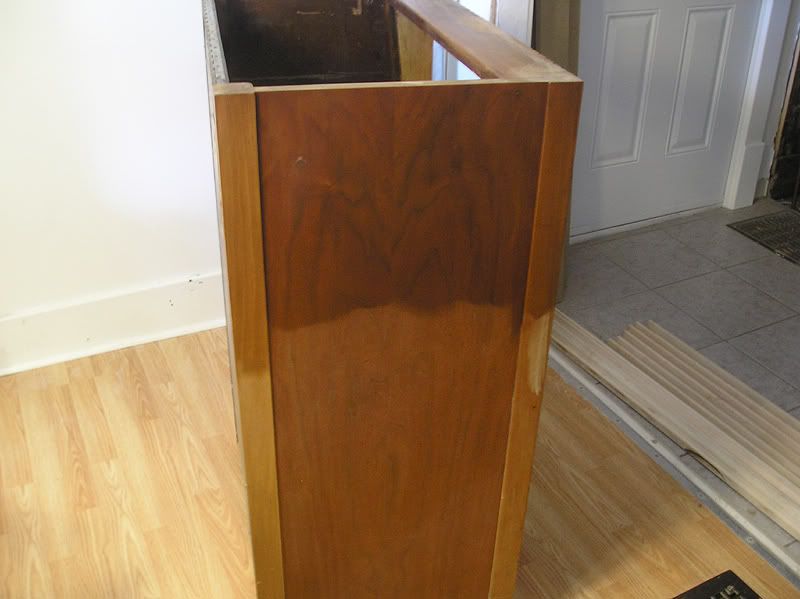

Hi JC.
ReplyDeleteWow. A jaw dropping wow! You do amazing work, and I just had to drop a line to congratulate you (your determination)to find the exact profile for the mouldings. Oh how sweet it is.
Fabulous photos by the way. I agree with you, I love how the light defines the mouldings.
Your place is a magazine article in the making. Push for an opportunity to do that.
I have some restoration questions to ask you. Would you mind some correspondence? My email address is:
jdurrant@tds.net
Looking forward to more of your great photos.
Sincerely,
Mrs. D
JC, I am so glad you are paying so much attention to the details. Most people don't even see that!
ReplyDeleteIt takes a true old house lover to appreciate the details!
I agree with Mrs.D. your home will be magazine quality when finished!
Will you painting the rooms craftsman home colors and doing wallpaper?
Sincerely, Miss Dolly
P.S. the cabinet looks amazing!
ReplyDeleteHello Miss Dolly,
ReplyDeleteThanks for the nod of approval. And yes, I'm VERY detail oriented, and a perfectionist, so no jobs around the house will be done "half-assed". I want it to look as nice as possible (without breaking the bank). For the most part, I'm reusing scrap wood, and making my own bits of millwork (like the window trim mouldings).
As for the colours, I just want something like the inspiration photos posted earlier: nice, relaxing neutral colours. For the upstairs hallway, it will go a sandy-taupe colour (not too dark, but it will accent all the old door casings nicely), and the only other colour I've decided on, is that the living room will go green (kind of like a light forest/olive green).
Interesting article and one which should be more widely known about in my view. Your level of detail is good and the clarity of writing is excellent. I have bookmarked it for you so that others will be able to see what you have to say.
ReplyDeleteWood columns